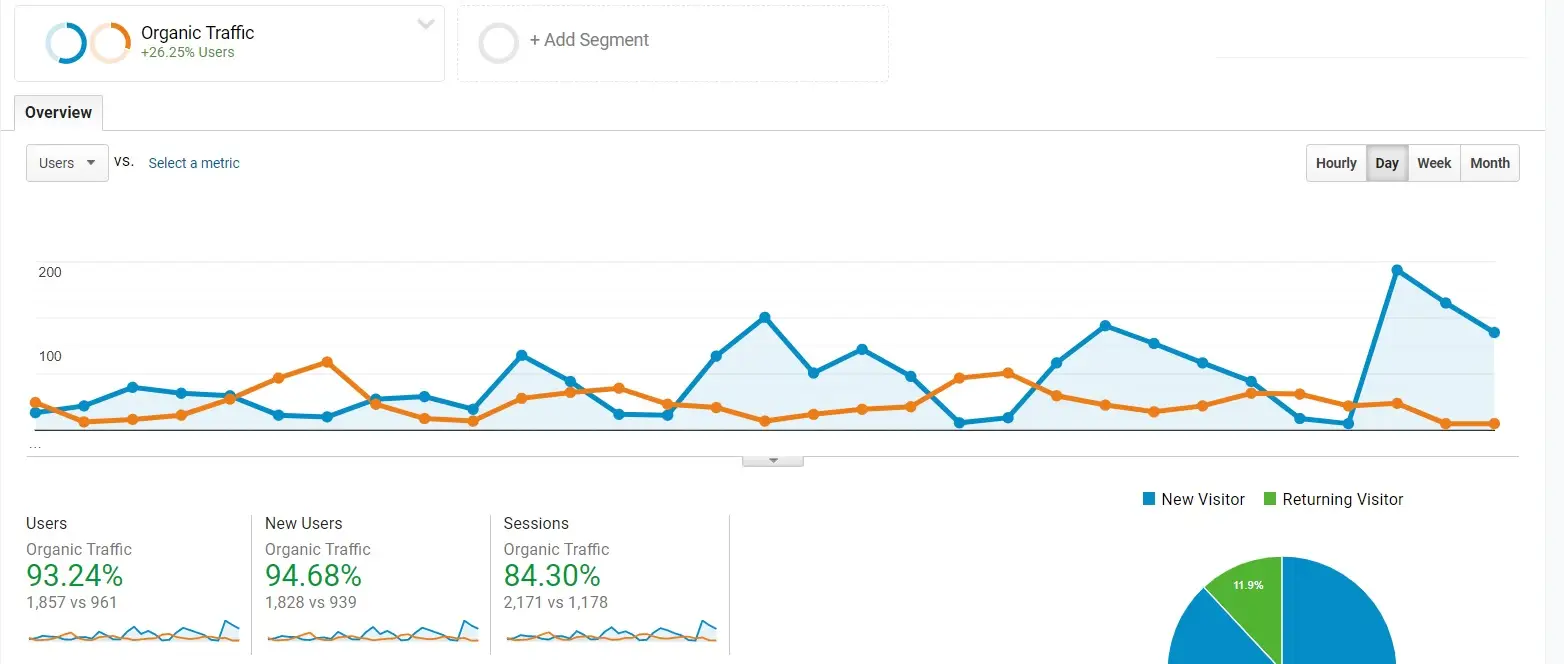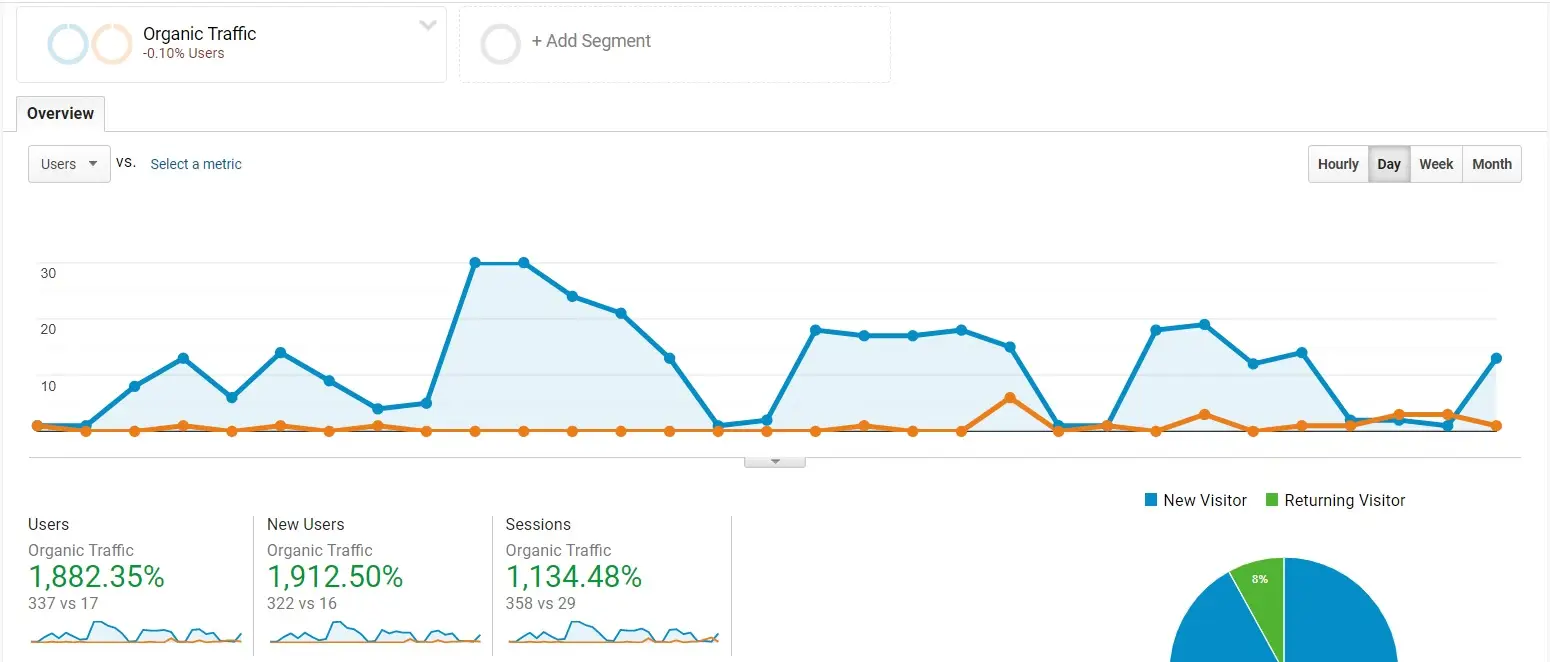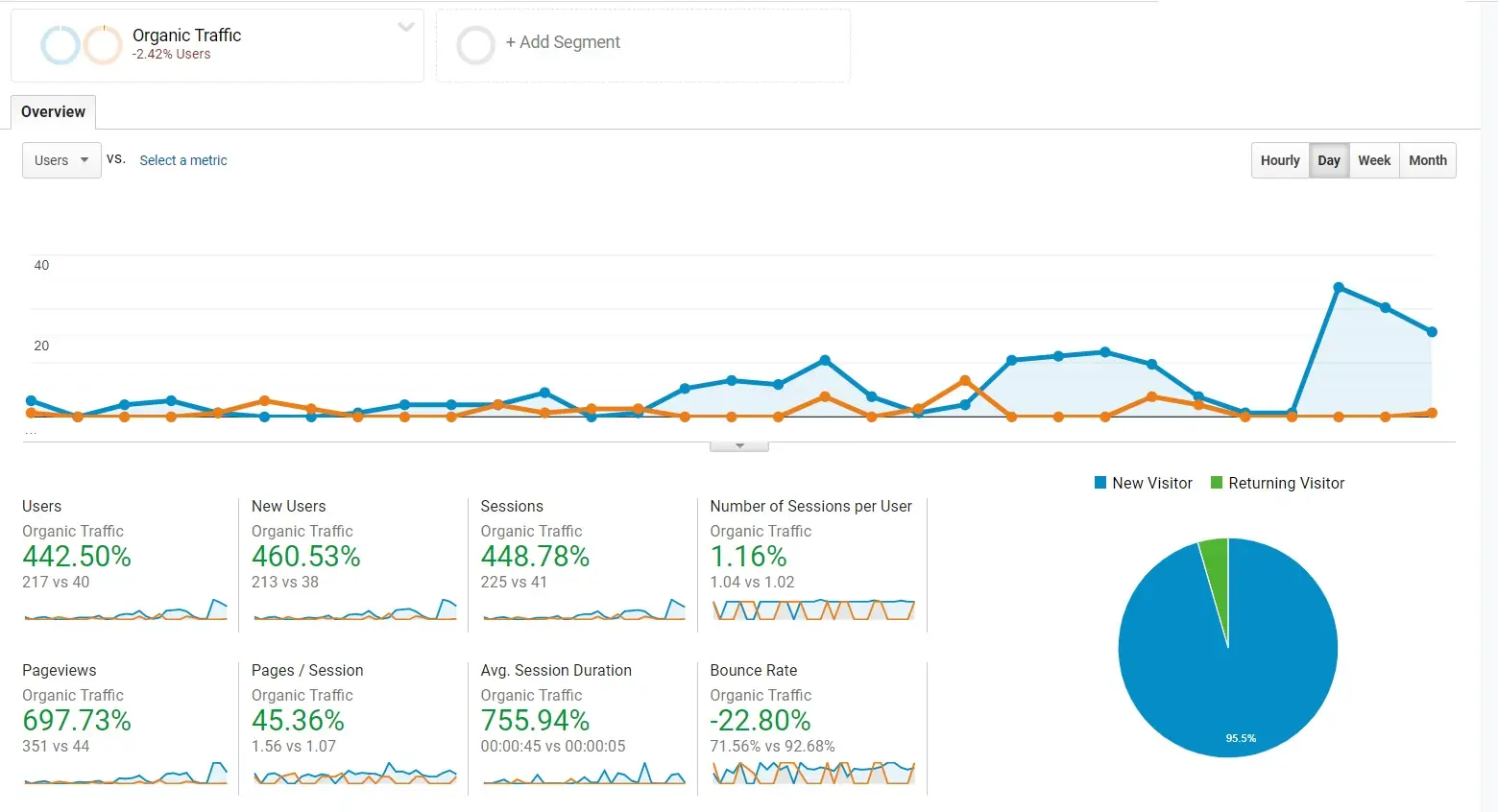Mastering Competitor Keyword Research: Tools and Strategies
In the fast-paced world of digital marketing, understanding competitor keywords is essential for any business aiming to stand out online. These keywords are the specific terms that rival companies target to attract traffic and enhance their visibility. By digging into competitor keywords, businesses can uncover valuable insights, spot new opportunities, and refine their own SEO strategy.
Competitor keywords reveal market trends and consumer behavior. By analyzing what terms competitors rank for, businesses can align their offerings with what potential customers are actually searching for. This insight can lead to more engaging content and a stronger connection with the audience.
Moreover, looking at competitors’ keywords helps identify gaps in a company’s own SEO strategy. Discovering keywords that rivals are successfully targeting but that you might be missing allows you to fill those gaps, boosting your visibility in search engine results.
Additionally, competitor keyword analysis is a game-changer for advertising. By adopting keywords that competitors use in their pay-per-click campaigns, businesses can create more targeted and effective ads, ensuring that every marketing dollar counts.
In essence, competitor keywords are a secret weapon in the digital marketing arsenal. They not only highlight what’s trending but also help businesses refine their approach, capture more customers, and thrive in a competitive landscape.

Conducting Competitor Keyword Analysis
1.1. Utilizing Competitive Analysis Frameworks
Establishing a competitive analysis framework is essential for systematically evaluating competitors’ keyword strategies. This structured approach helps you organize your findings, ensuring you focus on key elements such as keyword selection, content quality, audience engagement, and performance metrics. By creating templates or checklists, you can track your competitors’ strengths and weaknesses, making it easier to identify opportunities for your own site. This method not only saves time but also enhances the depth of your analysis, allowing for a more strategic approach to keyword targeting.
1.2. Identifying Competitors in Search Results
It’s crucial to distinguish between direct business competitors and those competing for the same keywords in search results. For example, a company selling SEO tools might compete with a blog that educates users about SEO. Both target similar audiences but serve different purposes. This understanding enables you to broaden your analysis, identifying competitors that may not be in your immediate business sphere but are still vying for the same search traffic. By expanding your competitor list, you can uncover new keyword opportunities and insights that might be relevant to your content strategy.
1.3. Gathering Keywords Used by Competitors
Collecting keywords that competitors rank for provides a wealth of information about their content strategies and audience targeting. This step often involves using SEO tools to extract data from competitor sites, revealing the terms that drive traffic to their pages. Analyzing this data can help you identify successful keyword themes, content formats, and audience interests that you might be overlooking. By understanding the keywords that work for competitors, you can refine your own keyword strategy, potentially incorporating high-performing keywords into your content calendar.
1.4. Spotting Keyword and Content Shortfalls
A critical aspect of competitor keyword analysis is identifying gaps in your content compared to your competitors. This involves a content gap analysis, where you assess topics and keywords that competitors cover but your site does not. By highlighting these gaps, you can prioritize new content creation to fill them, enhancing your site’s relevance and authority. This proactive approach can lead to increased organic traffic, as search engines favor comprehensive content that addresses user needs. Moreover, filling these gaps helps ensure that your site remains competitive in search rankings.
1.5. Understanding Target Audiences
Gaining insights into your target audience’s needs, preferences, and search behaviors is vital for effective keyword targeting. Analyzing competitors’ keywords can reveal what interests their audiences, which can be indicative of broader trends within your market. Understanding search behavior, such as common questions or pain points, allows you to tailor your content to better meet the specific needs of your audience. This alignment not only enhances user engagement but also increases the likelihood of conversions, as visitors find content that resonates with them.
1.6. Crafting SEO-Optimized Content
Creating high-quality, SEO-optimized content is critical for improving search rankings. This process goes beyond simply incorporating keywords; it requires producing valuable and informative content that engages users. SEO optimization includes ensuring that your content is structured well, uses appropriate headings, and includes meta tags and descriptions. By focusing on user experience alongside keyword usage, you can increase the chances of attracting organic traffic, improving dwell time, and reducing bounce rates, all of which contribute positively to your site’s SEO performance.
1.7. Monitoring Competitor Performance
Ongoing monitoring of competitors’ keyword rankings and content updates is essential for staying ahead in the digital landscape. Using SEO tools to track changes in their rankings allows you to identify emerging trends, shifts in content strategies, or changes in audience engagement. This real-time analysis helps you adapt your strategies as needed, ensuring that you remain competitive. By staying informed about competitor performance, you can proactively refine your keyword targeting and content creation efforts to capitalize on new opportunities.

Steps for Analyzing Competitor Keywords
2.1. Identifying Competitors
The first step in analyzing competitor keywords is identifying who your true competitors are in the digital space. This involves distinguishing between direct business competitors and those who share a common audience or keyword space. By broadening your analysis to include various competitors, you can gain a comprehensive understanding of the landscape, uncovering insights that can enhance your keyword strategy.
2.1.1. Using Google Related Searches
One effective method for finding competitors is utilizing Google’s related searches feature. By entering your website URL or a relevant keyword into the search bar, you can see a list of related domains that Google suggests. This approach can lead you to discover sites that may not be on your radar but are competing for the same audience or keywords. By exploring these related sites, you can gain insights into additional keywords and content strategies that may be beneficial for your own site.
2.1.2. Analyzing Overlapping Keywords
Identifying keywords that both your site and competitors rank for provides valuable insights into shared visibility in search results. This step involves using tools to compare your keyword performance against that of competitors, allowing you to see which terms are yielding results for both parties. By recognizing areas of overlap, you can determine your strengths and weaknesses and adjust your keyword strategy to leverage high-traffic terms more effectively.
2.1.3. Conducting Keyword Research
Thorough keyword research is crucial for uncovering additional relevant terms that can enhance your content strategy. This process involves exploring both short-tail and long-tail keywords, analyzing their search volumes, competition levels, and user intent. By gathering comprehensive keyword data, you can build a well-rounded strategy that captures various search intents and meets the needs of your audience.
2.1.4. Criteria for Competitor Identification
Defining specific criteria for identifying competitors ensures that you focus on the most relevant sites in your analysis. This might include factors such as the type of content they produce, their target audience, industry positioning, and overall SEO strategies. By narrowing your focus based on these criteria, you can conduct a more effective analysis that yields actionable insights and helps you refine your keyword targeting.
2.2. Discovering Potential Keywords Used by Competitors
Investigating the keywords that competitors rank for unveils new opportunities for your own content strategy. This involves using SEO tools to extract a list of keywords that drive traffic to competitor sites. By understanding the keywords that work for your competitors, you can identify high-potential terms that may be relevant to your audience and incorporate them into your own SEO efforts.
2.2.1. Comparing Your Rankings with Competitors’
Analyzing how your keyword rankings compare to those of competitors is an essential step in identifying areas for improvement. This comparative analysis can highlight keywords where you are underperforming, offering insights into adjustments you can make to your content strategy to enhance your visibility in search results.
2.2.1.1. Reviewing Organic Keywords for a Competing Site
Examining the organic keywords that drive traffic to competitor sites allows you to uncover effective terms you may not be targeting. By identifying which keywords are performing well for others, you can strategically incorporate similar terms into your content, enhancing your chances of capturing organic traffic.
2.2.1.2. Evaluating Paid Search Keywords for a Competing Site
Analyzing the paid search strategies of competitors provides insights into which keywords they prioritize for advertising. Understanding their choices can indicate high-value terms and inform your own paid advertising strategies, helping you to allocate budget effectively and improve overall marketing performance.
2.2.1.3. Analyzing PLA Keywords for a Competing Site
Exploring Product Listing Ads (PLA) keywords used by competitors gives you insights into how they position their products in search results. This analysis can uncover effective keywords for your own product marketing and guide your advertising strategies, helping you to better target potential customers.
2.3. Selecting Competitor Keywords to Target
Choosing specific keywords to focus on involves evaluating their relevance, search volume, competition, and potential traffic impact. This selection process ensures that you target terms that not only resonate with your audience but also have the potential to drive meaningful traffic and conversions to your site.
2.4. Utilizing a Content Gap Analysis Tool
Employing tools designed for content gap analysis allows you to pinpoint keywords that competitors rank for but your site does not. This process highlights content opportunities that you may be missing and guides your content creation efforts toward high-impact topics that can improve your search visibility.
2.5. Identifying Key Topics of Interest
Finding valuable topics that resonate with your audience is crucial for driving engagement and organic traffic. This involves researching content trends, analyzing audience preferences, and understanding what types of information are most sought after in your niche. By aligning your content strategy with these insights, you can create more targeted and relevant content that attracts and retains visitors.
2.5.1. Assessing Business Value
Evaluating the potential business impact of each keyword is essential for prioritizing your SEO efforts. This assessment helps you focus on keywords that are more likely to lead to conversions based on user intent. By targeting high-business-value keywords, you can enhance your overall marketing effectiveness and ROI.
2.5.2. Evaluating Search Volume
Considering the average monthly searches for keywords provides insight into their popularity and potential traffic. Higher search volumes often indicate greater interest and can help guide your keyword targeting strategy. By prioritizing keywords with significant search volume, you increase your chances of attracting relevant traffic.
2.5.3. Analyzing Organic Traffic Potential
Examining the estimated traffic for top-ranking pages helps determine the real traffic potential of targeted keywords. This analysis allows you to make informed decisions about which keywords to prioritize based on actual performance data, ensuring that your efforts are directed toward high-impact keywords.
2.6. Evaluating Ranking Difficulty
Assessing the difficulty of ranking for specific keywords is vital for setting realistic expectations. This involves analyzing various factors that influence your ability to rank, such as competition levels, keyword difficulty metrics, and the authority of competing sites. Understanding these dynamics helps you develop a keyword strategy that balances ambition with feasibility.
2.6.1. Understanding Search Intent
Recognizing the intent behind search queries is essential for crafting relevant content that meets user needs. This involves analyzing whether users are seeking information, products, or specific websites. By aligning your content with user intent, you increase the likelihood of satisfying searcher queries and improving your chances of ranking well.
2.6.2. Evaluating Website Authority
Assessing your site’s authority compared to competitors can help gauge your likelihood of ranking for certain keywords. This involves looking at domain ratings and backlink profiles. Understanding where your site stands in relation to others can inform your keyword targeting and content strategies.
2.6.3. Analyzing Backlink Quality
Backlinks play a critical role in ranking algorithms, and analyzing the quality of links to top-ranking pages can provide insights into your chances of outranking them. By evaluating both the quantity and quality of backlinks, you can identify opportunities to improve your own link-building efforts, ultimately boosting your ranking potential.
2.6.4. Setting Realistic Keyword Targets
Even if a keyword appears challenging, it doesn’t mean it shouldn’t be targeted. Segmenting keywords into short, medium, and long-term goals allows you to devise a strategic approach to tackling difficult keywords over time, increasing your chances of success in the long run.

Analyzing Competitor Keywords at the Page Level
3.1. Finding Competing Pages for Your Keywords
The first step in page-level keyword analysis is identifying pages that compete for the same target keywords. This typically involves conducting a Google search for your primary keyword and examining the top-ranking pages. By analyzing these competing pages, you can identify content gaps and opportunities for improvement.
3.2. Exploring Traffic Share by Pages
Using SEO tools to explore the traffic share by pages provides insights into which specific pages drive traffic for particular keywords. By entering relevant keywords into a keyword analysis tool, you can identify which pages are performing well and which topics may warrant further exploration for your content strategy.
3.3. Conducting a Content Gap Analysis
Once you’ve identified competing pages, the next step is to perform a content gap analysis. This involves comparing your content with that of competitors to identify missing information or topics that need further exploration. By filling these gaps, you can enhance your content’s relevance and comprehensiveness, improving your chances of ranking higher.
3.4. Identifying Subtopics to Address
Analyzing the keywords that competitors rank for can reveal subtopics that you may not have addressed in your existing content. This analysis helps you identify specific areas to expand upon, enhancing the depth and relevance of your content, which can lead to improved rankings for primary and long-tail keywords.
3.5. Adding New Sections to Existing Content
Once gaps and subtopics are identified, the next step is to enrich your existing content by adding new sections that address these areas. This could involve incorporating relevant keywords, updating data, or enhancing the overall quality of the content. By doing so, you can improve the user experience and increase your chances of ranking higher in search results.
3.6. Monitoring Changes in SERP Performance
Ongoing monitoring of changes in your content’s performance in search results is crucial for understanding the impact of your updates. By analyzing how your rankings change over time, you can assess the effectiveness of your content optimization efforts and make further adjustments as needed to maximize your search visibility.
3.7. Evaluating Audience Engagement Metrics
Finally, assessing audience engagement metrics, such as bounce rates, time on page, and social shares, helps determine how well your content resonates with users. By analyzing these metrics, you can identify areas for improvement and adjust your content strategy to enhance user engagement and satisfaction.

Competitor Keyword Research Tools
1. WordStream
Overview: WordStream is primarily known for its PPC management tools, but it also offers robust keyword research capabilities.
Features:
- Keyword discovery tool that suggests keywords based on a seed keyword or website.
- Competitive analysis that reveals keywords competitors are using.
- Ad group suggestions for PPC campaigns.
- Performance tracking for keywords.
Benefits: Particularly useful for businesses looking to optimize both SEO and PPC strategies, helping to identify high-performing keywords efficiently.
2. Google Keyword Planner
Overview: A free tool from Google Ads, essential for both advertisers and SEO professionals.
Features:
- Provides keyword suggestions based on search terms or URLs.
- Displays average monthly search volume and competition levels.
- Allows users to filter keywords by location, language, and search network.
- Historical statistics and forecasts for keywords.
Benefits: Ideal for researching keywords with substantial search volumes and understanding the competitive landscape, especially for paid campaigns.
3. Ahrefs
Overview: Ahrefs is a comprehensive SEO suite known for its extensive backlink database and keyword research tools.
Features:
- Keyword Explorer that offers search volume, keyword difficulty, and clicks data.
- SERP analysis to see which pages rank for specific keywords.
- Suggestions for related keywords and questions.
- Ability to track rankings over time.
Benefits: Excellent for in-depth competitive analysis and discovering high-potential keywords that can drive traffic to your site.
4. SEMrush
Overview: A leading SEO and marketing tool that provides extensive keyword research features.
Features:
- Keyword Magic Tool for generating keyword ideas and grouping them by topic.
- Keyword difficulty score and search intent analysis.
- Competitor keyword research to see what rivals are targeting.
- Content optimization suggestions based on targeted keywords.
Benefits: Great for marketers looking to understand competitive landscapes and optimize both content and PPC strategies effectively.
5. Rank Tracker by SEO PowerSuite
Overview: A part of the SEO PowerSuite toolkit, Rank Tracker focuses on tracking keyword rankings.
Features:
- Ability to track rankings across different search engines and locations.
- Keyword research features that suggest new keywords based on your site.
- Competitor analysis to compare keyword performance.
- Reporting features for performance insights.
Benefits: Ideal for businesses focused on monitoring their SEO progress over time and identifying opportunities for improvement.
6. SE Ranking
Overview: A comprehensive SEO platform that offers keyword research, tracking, and competitive analysis.
Features:
- Keyword suggestion tool with search volume and competition metrics.
- SERP analysis and competitor keyword tracking.
- Rank tracking across different devices and locations.
- Reporting and analytics features for performance monitoring.
Benefits: Provides a well-rounded suite for ongoing SEO efforts, making it suitable for both beginners and experienced marketers.
7. SpyFu
Overview: SpyFu focuses on competitor research, revealing what keywords your rivals are targeting.
Features:
- Extensive competitor keyword analysis, including PPC and SEO keywords.
- Historical data on keyword performance for your competitors.
- Keyword suggestions based on competitor analysis.
- Ad performance insights for competitive intelligence.
Benefits: Particularly useful for understanding the competitive landscape and uncovering high-value keywords that competitors may be using successfully.
8. Ubersuggest
Overview: A free tool that provides keyword suggestions and SEO insights.
Features:
- Keyword suggestions based on search volume, CPC, and competition data.
- Content ideas based on popular keywords.
- Backlink data for competitor analysis.
Benefits: User-friendly and accessible, making it great for quick keyword research and generating content ideas without a steep learning curve.
9. BuzzSumo
Overview: While primarily a content research tool, BuzzSumo can help with keyword insights related to trending topics.
Features:
- Identifies trending topics and content that resonates with audiences.
- Provides keyword suggestions based on popular content.
- Social media engagement metrics to gauge content performance.
Benefits: Useful for content marketers looking to align their keyword strategy with trending topics and maximize engagement.
10. Google Tools (Search, Alerts, Trends)
- Google Search: Utilize autocomplete and “People also ask” features to find popular queries.
- Google Alerts: Set alerts for specific keywords to monitor mentions and trends.
- Google Trends: Analyzes the popularity of search terms over time, allowing users to spot trends and seasonal interest.
Benefits: Collectively, these tools provide a comprehensive view of search behavior and keyword relevance, directly from the source of search data.
11. Moz
Overview: Moz offers various SEO tools, including its popular Keyword Explorer.
Features:
- Keyword suggestions with search volume, difficulty scores, and organic CTR estimates.
- SERP analysis to visualize current keyword rankings.
- Integration with other Moz tools for holistic SEO insights.
Benefits: Known for its user-friendly interface and actionable insights, Moz is particularly helpful for marketers looking to prioritize keywords effectively.


